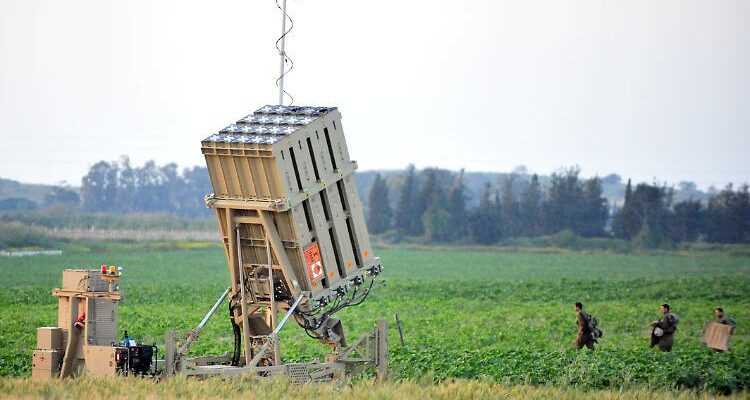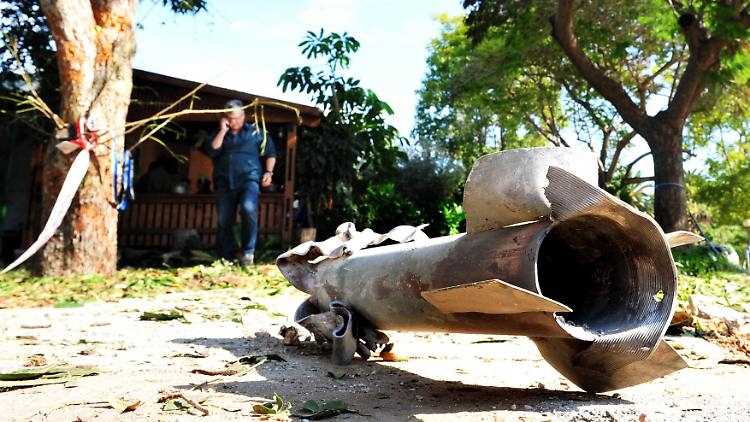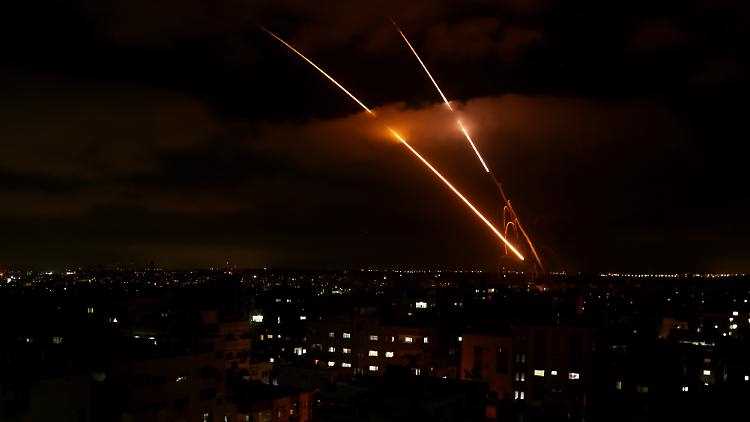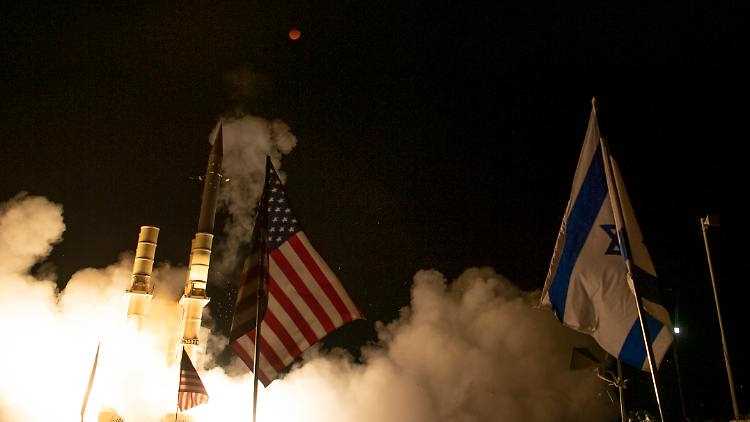function and effect
The “Iron Dome” as protection for Germany?
By Holger Preiss
03/28/2022, 5:09 p.m
Russia’s attack on Ukraine with hypersonic missiles has raised calls for an effective anti-missile defense system in Germany. An “Iron Dome” based on the Israeli model is to be built. But what is it, what is this system capable of and also protect it from hypersonic missiles?
After the first attack with a Russian hypersonic missile on targets in Ukraine, the alarm bells also rang in Germany. It is irrelevant whether the “Kinschal”, the Russian name for the hypersonic rocket, reaches ten times the speed of sound, i.e. 12,350 kilometers per hour, or only half as fast. The fact is that a conventional cruise missile of the “Tomahawk” type only travels at a speed of almost 900 kilometers per hour. If you consider that the basic technology of the “Kinschal” goes back to technologies from the 1980s, the question arises as to why no veritable defense system against the offensive weapon has been found to this day.
The misunderstanding “Iron Dome”
The Israeli anti-missile system “Iron Dome” is particularly suitable against artillery fire and short-range missiles.
(Photo: dpa)
In the program “Anne Will”, Chancellor Olaf Scholz expressed his willingness to protect Germany from possible rocket attacks with an “Iron Dome”. But the term “iron dome” is somewhat misleading. In fact, Israel has an anti-missile defense system by that name, but it is a system for destroying small, short-range missiles, including the Qassam rockets fired from the Gaza Strip by Hezbollah, for example.
The Kassam rocket is said to have a speed of around 250 meters per second, i.e. a good 900 km/h. The problem is said to be that by being made in backyards in Palestine, it’s not speed-true. So she’s more or less tumbling through the air. “Iron Dome” is then very well suited as a defense against such attack scenarios. The system calculates the trajectory and, if danger threatens, launches a defensive missile. It follows the enemy projectile and then explodes near it, rendering it harmless while it is still in the air. The whole process only takes a few seconds.
Ultimately, however, the “Iron Dome” defense system is only able to intercept mortar shells and short-range missiles with a range of between 70 and 250 kilometers. Cruise missiles like the hypersonic missile “Kinzhal” would not even come close to reaching them. In addition, the “iron dome”, which consists of up to four launch units, can only defend an area of 150 square kilometers, i.e. a circle with a radius of almost seven kilometers, against rocket and artillery attacks.
“Iron Dome” is not even suitable for protecting Germany or even the capital Berlin. Because if a first attack were to take place here, it would certainly not be with short-range missiles or artillery fire. This is of course also clear to the specialists and in this respect a second anti-missile defense system for Germany, originating from Israel, was brought up for discussion. It’s Arrow 3.
Defense with the “arrow”
The “Arrow” defense system was developed in the late 1980s and designed under the premise of intercepting and destroying so-called surface-to-surface missiles. It was also the first antiballistic system that could also be used in the stratosphere, i.e. at an altitude of 100 kilometers. In the meantime, “Arrow 3” has developed so far that it can render enemy missiles harmless with a direct hit – English “hit-to-kill”. In addition, the guided missile is able to ensure destruction by its fragmentation warhead with a so-called proximity fuse in the case of missiles just flying by. The “anti-missile missile” moves at a speed of up to nine Mach, i.e. 2500 meters per second, and is therefore almost as fast as the Russian “Kinschal”.
However, it must be noted that “Arrow 3” has so far only been tested at the Sdot Micha air force base in Israel and the Pacific Spaceport Complex on the island of Kodiak south of Alaska. In February 2021, Israel and the United States, which have been involved in the development and financing of Arrow since the project began, announced that development of the Arrow 4 interceptor missile will begin immediately. Completion is planned for the coming decades, so there is currently no option for an “iron dome” over Germany or even Europe.
Protective shield not only for Germany
Even if part of the 100 billion euro special fund for equipping the Bundeswehr were invested in defense measures, the “Arrow 3” defense system in Germany would not be ready for use until 2025 at the earliest. The “Bild am Sonntag” knew from security circles to report that the system would cost two billion euros. For the protective shield, missile radar systems of the “Super Green Pine” type would have to be set up at three locations in Germany. Manufactured by Elta, a subsidiary of Israel Aerospace Industries, this ground-based anti-missile radar is the heart and brain of Arrow 3, so to speak.
The data that “Super Green Pine” would pick up in a missile attack went immediately to the national command post in Uedem in North Rhine-Westphalia. There, the Air Force would evaluate the information and fire one of the “Arrow 3” rockets distributed throughout Germany to destroy the attacker rocket. According to the “Bild am Sonntag” report, the radar devices should be so powerful that they could also cover a protective screen over Poland, Romania and the Baltic States. The neighboring countries would only have to ensure that they had stationed “Arrow 3” missiles for counter-defence.
“There is no protection against hypersonic weapons”
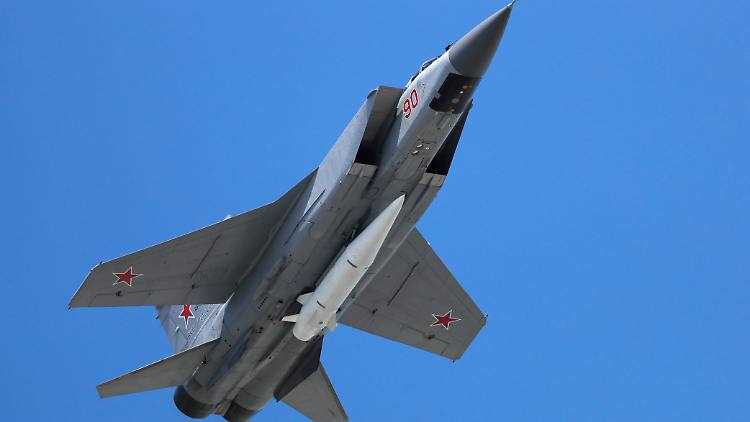
The range of the Russian “Kinzhal” can be significantly increased when fired from a MiG-31.
(Photo: dpa)
But as convincing as the defense with “Arrow 3” may sound, there are also critical voices. Retired NATO General Hans-Lothar Domröse said to the editorial network Germany (RND): “In Israel, this defense system against traditional missiles has been working extremely well for years.” But if Russia uses hypersonic weapons, no protective shield in the world can do anything about it. “There is currently no defense system that can detect missiles with such a speed and then intercept them.” Germany would thus buy something that currently does not reliably protect against such a weapon.
The CDU foreign politician Roderich Kiesewetter, Colonel a. D., opposite the RND. “There is no protection against hypersonic weapons,” said the foreign expert, “even the Arrow 3 missiles under discussion cannot do anything against such weapons.” The expert also warned that it made more sense to protect the neighboring countries to the east and to invest in civil defense in Germany. According to Kiesewetter, the Federal Office for Civil Protection and Disaster Assistance only received a fraction of the EUR 100 million it asked for.
